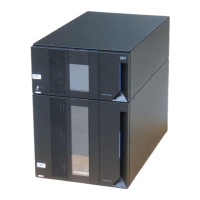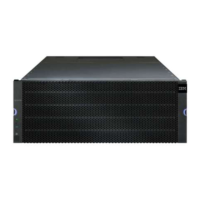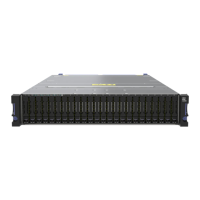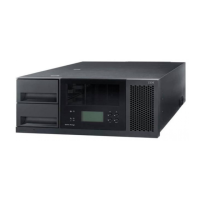Chapter 1. Introduction to IBM Midrange System Storage storage subsystems 9
1.5 IBM Midrange System Storage hard disk drives
Every storage subsystem within the IBM Midrange System Storage series is a multi-tiered
storage server that is capable of supporting multiple disk drive technologies even within the
single expansion unit. This capability enables you to have a Total Cost of Ownership (TCO)
reduction and a storage consolidation by putting together different workloads with different
performance requirements. Figure 1-4 shows a possible hard disk drive (HDD) layout within
four expansion units.
Figure 1-4 Multi-Tier HDD layout
The currently supported HDD technologies are briefly described below:
Solid State Drives (SSDs)
Solid State Drives use semiconductor devices (solid state memory) to store data and have
no moving parts. An SDD is a flash memory device mimicking a disk drive. SSDs are
available with the same interfaces used by hard disk drives (for example, SAS, SATA, and
Fibre Channel) and they are packaged in the same form factors as hard disk drives
(3.5-in., 2.5-in., and 1.8-in.). SSDs are designed to plug into the same environments as
those supported by hard disk drives. As already mentioned, the simple fact that there are
no moving parts (disk platters, magnetic heads, or motor) in an SSD results in:
– Faster data access and throughput: The access to the data with an SSD is faster
because again, there is no read/write head to move and no magnetic platters need to
spin up (no latency). On an SSD, the data can be read almost immediately.
– Better reliability: Again, the lack of moving and rotating parts almost eliminates the risk
of mechanical failure. SSDs have the ability to tolerate extreme shocks, higher
altitudes, vibration, and extremes of temperature. However, they can still fail and must
be RAID protected like traditional drives.
Tier 2
15K FC
RAID 5
Tier 3
SATA
RAID 6
Tier 1
15K FDE
RAID 10
Tier 0
SSD
RAID 10
SSD SATA
SSD
SSD
SSD
SATA
SATA
SATA
FC
FC
FC
FC
FDE
FDE
FDE
FDE
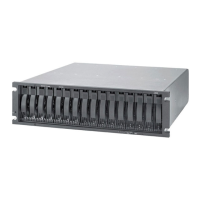
